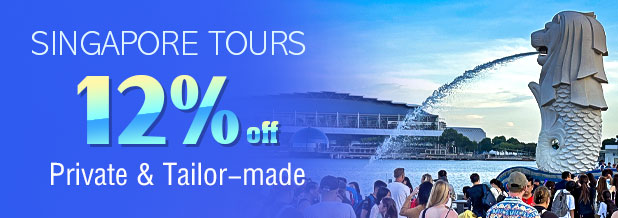Singapore Travel Guide
Basic Facts of Singapore
Location: in Southeast Asia, bordering the Strait of Johor on the north, which separates it from Peninsular Malaysia, Singapore Strait on the south and facing Indonesia across the strait; adjoining south port of Malacca Strait.Area: 719 sq km (278 sq mi)
Population: 5.6 million
Language: English, Malay, Chinese and Tamil
Currency: SGD
Time Zone: UTC+8
Capital: Singapore
Administrative Division: a city-state divided into 5 communities: the central, the northeast, the northwest, the southeast and the southwest, which are separated into 89 electoral sections including 13 single-member constituencies and 16 group representation constituencies.
Religions and Beliefs: Buddhism, Christianity, Islam, Taoism and Hinduism
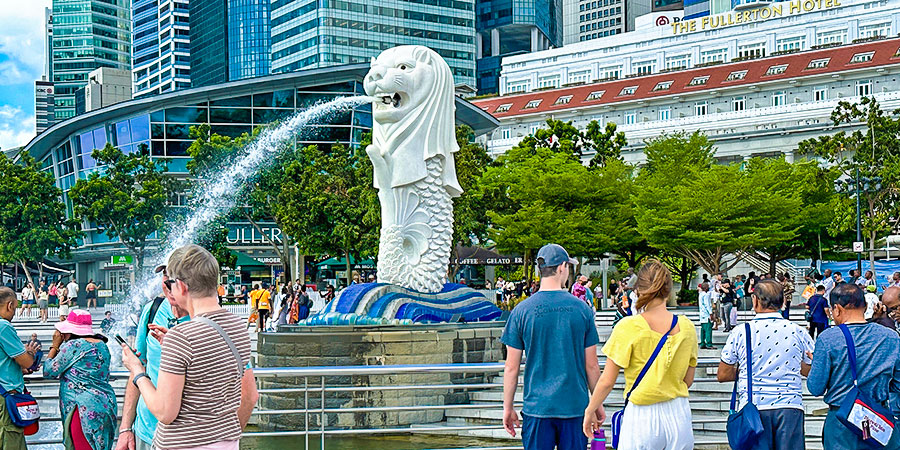
Merlion of Singapore
|
Top 10 Things to Do in Singapore
Singapore is a multicultural immigrant and developed country with the fusion of tradition, artistic atmosphere and high-technology elements. Especially the museums, big or small, all have their own style in architecture and delicate exhibitions enabling visitors to have a close look at the culture, history and art of Singapore. Except the museums, there are natural reserves, the world`s first Night Safari, beaches and water parks.Main attractions:
1. Universal Studios Singapore: the only amusement park in Asia belonging to Universal Studios, with seven theme zones, including Hollywood, New York, Ancient Egypt, and Science Fiction World; to enjoy the fantastic world of films, double-track roller coaster and Future Waterworld Theater.2. Little India: to feel Indian culture, attend Indian festivals, and buy spices, ornaments as well as clothes of Indian style.
3. Sentosa Island: to appreciate the beautiful beaches, blue seawater, Canna, coconut trees and other tropical plants; the best resort with a variety of museums, old cannons used by British army, music fountain, underwater world, and Asian village.
4. Singapore Zoo: one of the biggest zoos in the world with almost 1,700 animals; using natural enclosure instead of fences to create a comfortable environment for animals.

On Sentosa Island, Singapore
|
Best Time to Visit Singapore
Singapore is suitable for travelling throughout the year in Singapore. From June to August, it is relatively hot. The rainy season is from November to February, so visitors can avoid these months. Also, tourists should avoid Christmas and Chinese New Year for it’s hard to find a cheap hotel and some scenic spots may be closed.In April or July, the annual World Gourmet Summit and Singapore’s Food Festival will be held. In June, there is the discount season. Travelers can choose to go during this time.

Singapore is an attractive destination in all seasons.
|
Transportation
With sea on three sides, visitors can get to Singapore by sea, land or air. SBS Transit and SMRT are two largest bus operators in Singapore, operating lines throughout the country. Buses accept payment by EZ-link card or cash, and it’s cheaper to use EZ-link card. It is worth noticing that buses are not equipped with arrival reminders. What`s more, there are taxi stands at downtown or you can wait for a taxi at roadsides except those with double yellow lines and zigzags which forbid parking.

Marina Bay Cruise, Singapore
|
Singapore Travel Tips
1. Never drop litter or spit at will, or you will be fined 1,000 SGD.2. Singapore bans on smoking. Buses, theaters, cinemas, restaurants, government offices and air-conditioned stores are no-smoking areas.
3. Chewing gum is not permitted to carry and use.
4. Dress properly and cover hands and feet with clothes when visiting temples and mosques.
5. Take off shoes before entering Indian temples and mosques as well as paying a visit to local’s house.
6. Using your right hand when eating Indian or Malay food.
History

Masjid Sultan at Kampong Glam
|
Geographical Features
The west and the central slope slowly with gentle undulating hills.The east and coastal areas are plains.
The average elevation is 17m (76ft) and the highest point is Bukit Timah Hill.
The total length of coastlines is 193 kilometers (120 miles).
You May Like
-
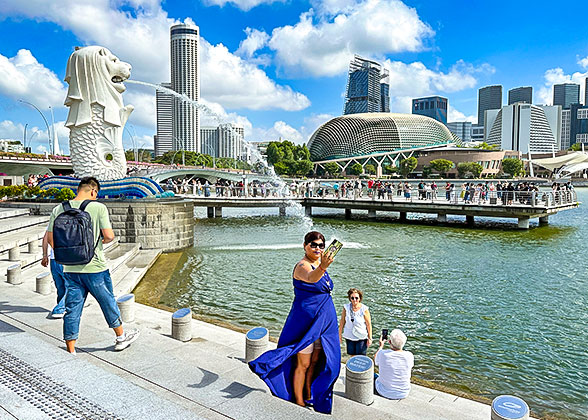 Singapore Day Tour to Merlion Park - Gardens by the Bay - Chinatown - Sultan Mosque - Little India from USD430
Singapore Day Tour to Merlion Park - Gardens by the Bay - Chinatown - Sultan Mosque - Little India from USD430 -
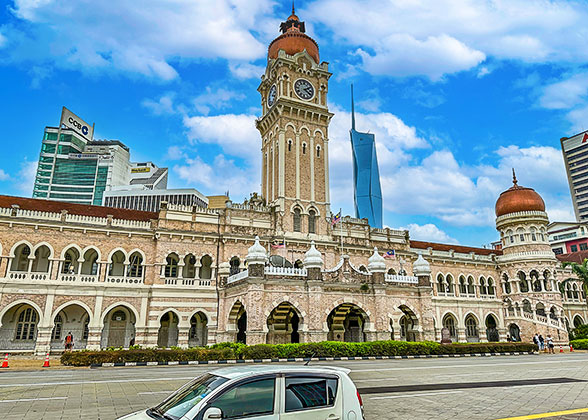 5 Days Malaysia & Singapore Highlights Tour of Kuala Lumpur - Malacca - Singapore from USD1259
5 Days Malaysia & Singapore Highlights Tour of Kuala Lumpur - Malacca - Singapore from USD1259 -
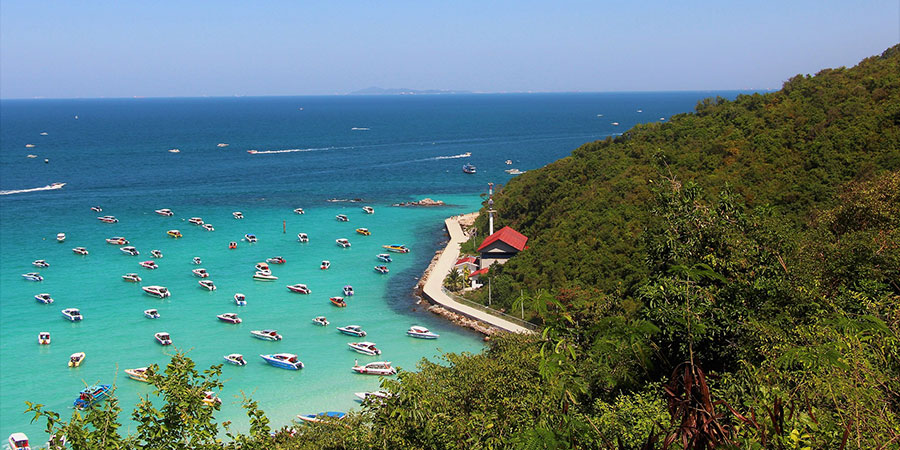 11 Days Singapore - Kuala Lumpur - Malacca - Kuala Lumpur - Bangkok - Pattaya - Bangkok from USD3413
11 Days Singapore - Kuala Lumpur - Malacca - Kuala Lumpur - Bangkok - Pattaya - Bangkok from USD3413


